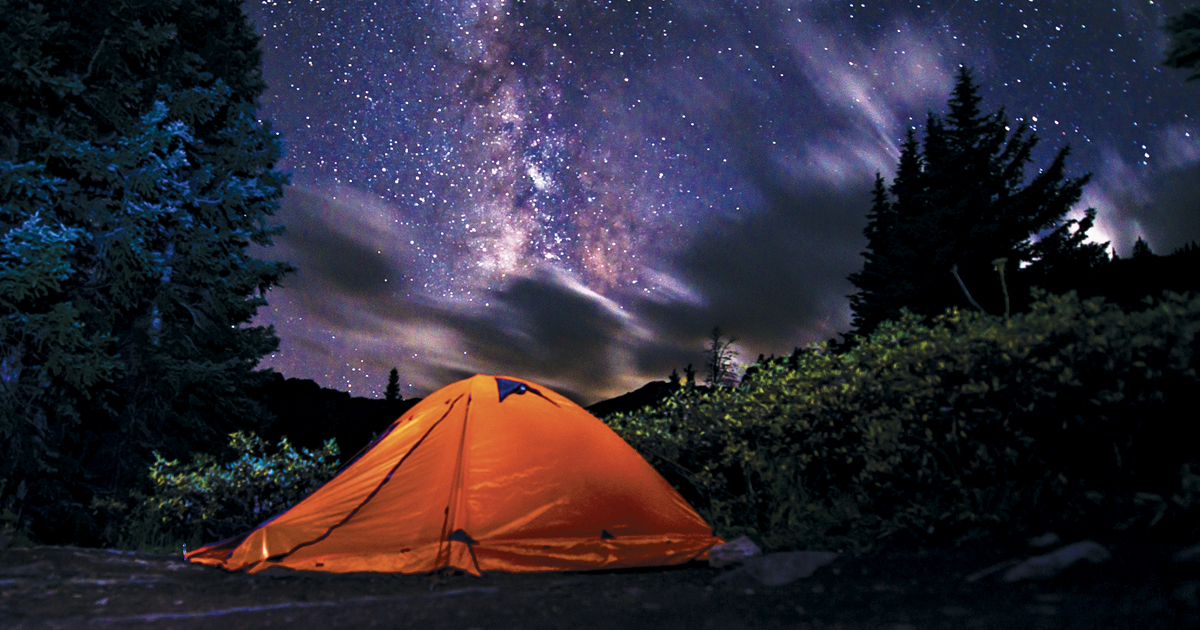Sherlock Holmes and Dr. Watson decided to go on a camping trip. After a hot dog roast and some stories around the fire, they set up their tent and lay down for the night.
Hours later, Holmes awoke and nudged his friend.
“Watson, look up at the sky. Tell me what you see.”
Watson replied, “I see millions of stars.”
“What does that tell you?”
Watson pondered a minute. “Astronomically, it tells me there are billions of stars and potentially billions of planets. Astrologically, I observe that Saturn is in Leo. Theologically, I can see that God is all powerful and that we are minute. Meteorologically, I suspect that we will have a beautiful day tomorrow. What does it tell you, Holmes?”
Holmes was silent a minute, then replied: “That someone has stolen our tent!”
Bert and the Big Slipper
As a child, I loved lying on my back on warm summer nights looking up at the stars. The night sky is a perfect canvas for a child’s imagination to scribble on. Were the stars looking back at me? What were they thinking? Could I reach them in a hot-air balloon?
My budding brain envisioned cities and civilizations out there. Creatures with tentacles and big eyes hurtling toward us in flying saucers. Or perhaps the aliens were cute and cuddly. Maybe one would land in my backyard and my mom would let me keep it as a pet.
Sometimes my brothers pointed out constellations to me. “That big cluster over there is Bert the water buffalo. That long squiggly line with the scoop on the end? That’s the big slipper.”
A Matter of Perspective
As the years passed, my fascination with the night sky only grew.
I learned that our humble little Milky Way galaxy contains somewhere between 100 and 200 billion stars. And if you leave the Milky Way, you’ll find billions upon billions of galaxies, so distant that you couldn’t reach them in our fastest spaceship in a billion lifetimes.
Smart people say there might be as many as three sextillion stars in the universe. That’s a three followed by 23 zeros.
The largest star our telescopes have discovered is UY Scuti. If I was to name it, I’d call it YU Sohuge. PHIL CALLAWAY
Our star, the sun, is so big you could barely squeeze 1.3 million Earths inside it. But as stars go, our sun is just a little fellow. The largest star our telescopes have discovered is UY Scuti. If I was to name it, I’d call it YU Sohuge. If you wrapped a measuring tape around Scuti, it would have to reach 4.7 billion miles—that’s 7.5 billion kilometres .Scuti is an estimated 21 billion times the volume of our sun. Yet it’s only a tiny speck on God’s vast tapestry of space.
A View of Creation
Each morning at breakfast, I read from a little devotional book, a collection of Bible verses.
This morning, it spoke of the stars. “The heavens are telling the glory of God. They are a marvelous display of His craftmanship. Since earliest times men have seen the earth and sky and all God made, and have known of His existence and great eternal power. He never left Himself without a witness. Day and night, they keep on telling about God. Without a sound or word, silent in the skies, their message reaches out to all the world. When I look up into the night skies and see the work of Your fingers—the moon and the stars You have made—I cannot understand how You can bother with mere puny man, to pay any attention to him.”
In 1962, John Glenn became the first American to orbit the earth, circling it three times. As he gazed out the windows of Discovery, he said, “To look out at this kind of creation and not believe in God is to me impossible. It just strengthens my faith.”
Let’s take time to gaze at the stars this week. And let’s ask ourselves why we would fear anything we face today when the God who created all of this loves us.
Photo: Krzysztof Wiktor/stock.Adobe.com
This story is from:










Leave a Comment